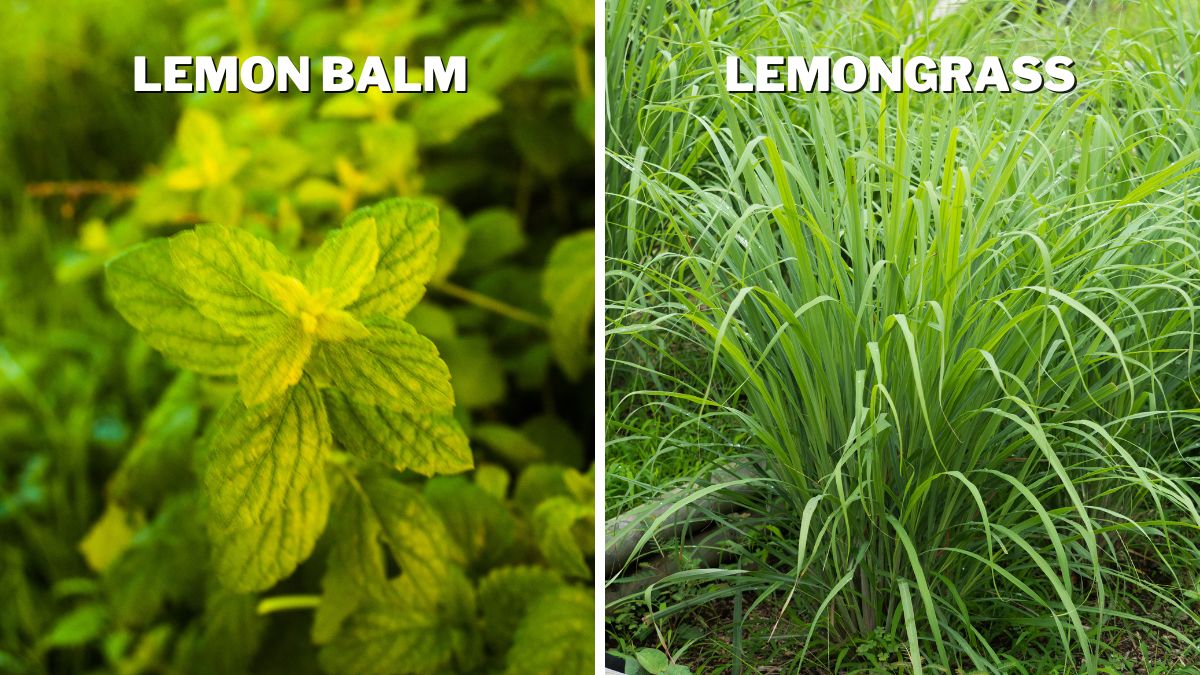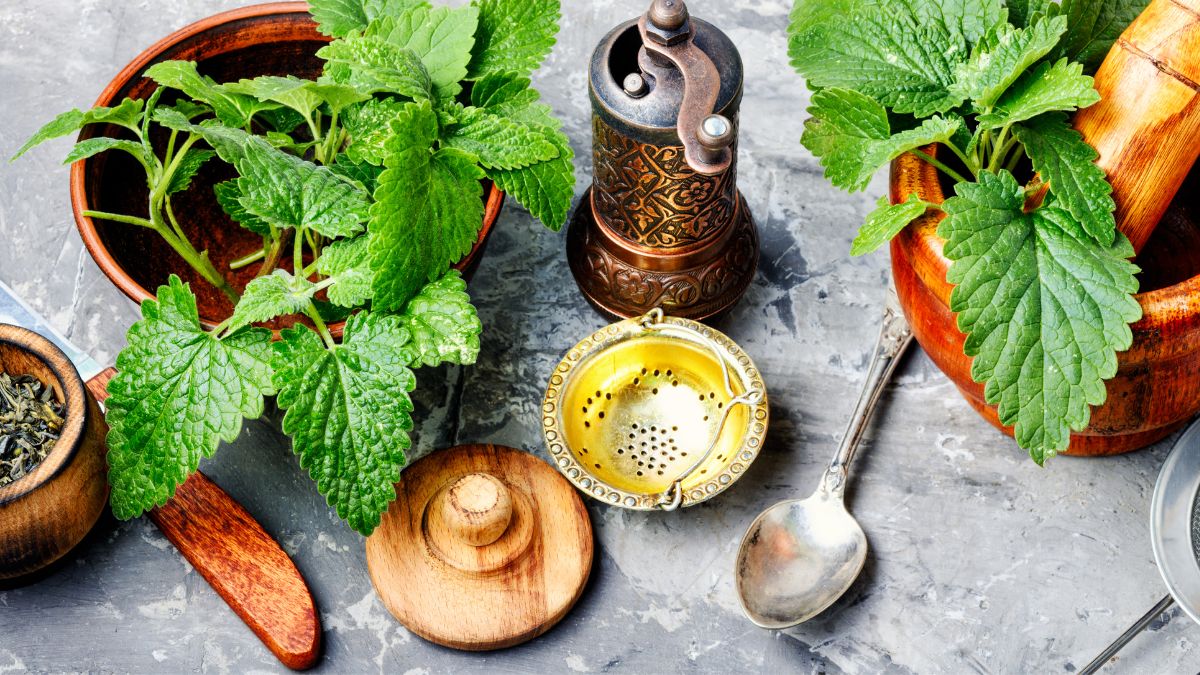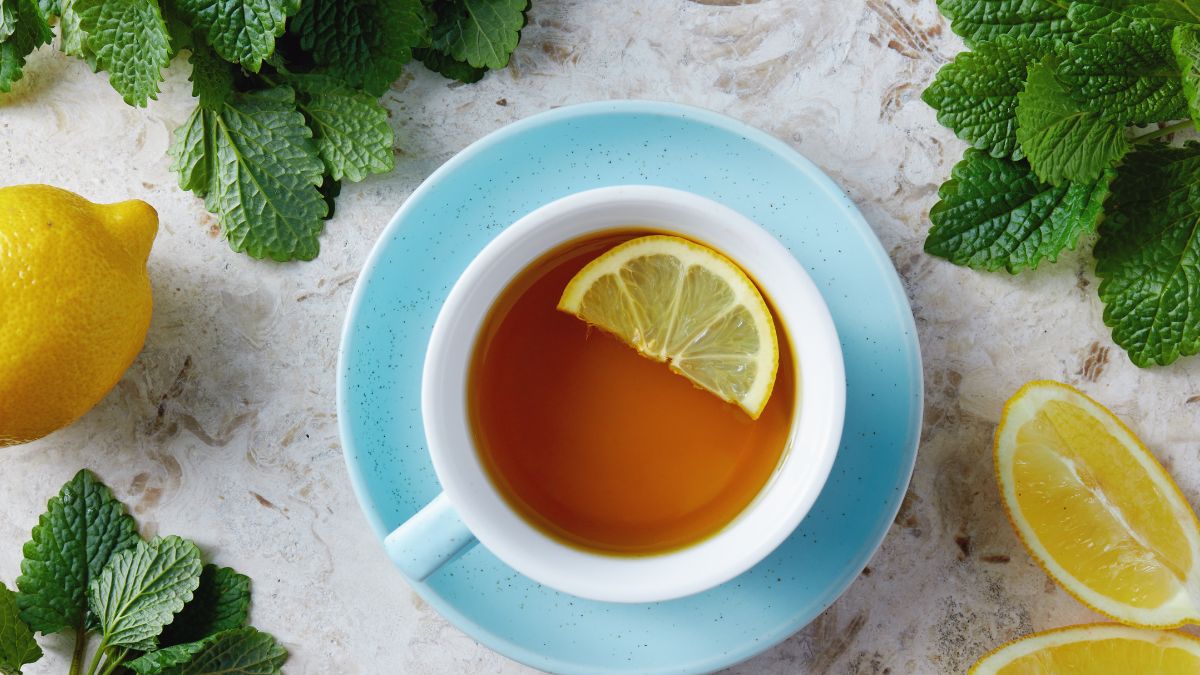Lemon Balm vs. Lemongrass: Differences & Uses

At the beginning of my search for new flavor combinations, one of the most common mistakes I made was to use lemon balm instead of lemongrass. Though these two plants both produce citrusy aromas, they have a number of differences that make them suitable for different uses. So, what makes lemon balm different from lemongrass?
While lemon balm is a European herb, lemongrass is a grass from Asia. Lemon balm is a better addition to soups and salads, while lemongrass is perfect in stir-fry dishes.
To better understand these differences and create magical meals and beverages using these two plants, I have included a detailed explanation below. Whether it is a salad, tea, soup, or stir-fried meal, you will find a new appreciation for the citrusy aroma.
What is the Difference Between Lemongrass and Lemon Balm?
Although lemongrass and lemon balm have a similar aroma, confusing these two plants is very difficult. They have different physical characteristics, origin, uses, and benefits.
Physical Characteristics of Lemon Balm and Lemongrass

Lemon balm is a perennial herb from the mint family. It usually grows up to 2 feet, but it can grow higher if you don’t maintain it. Leaves are similar to mint leaves with deep wrinkles; depending on the soil and climate, their color can be dark to yellowish green.
On the other hand, lemongrass is a type of grass. It is also a perennial herb that can grow 3 feet in height and 6 feet in diameter. It has coarse, straplike leaves and requires a lot of sun and humidity to grow.
Origin of Lemon Balm/Lemongrass
Although lemon balm originates from Europe, it also grows in Central Asia, Iran, and parts of the Mediterranean. This plant has been used since the Middle Ages, and even before that, as a medicine.
Lemongrass is widely used in Asian cuisine. It usually grows in Thailand, Burma, Sri Lanka and India. In general, it thrives in tropical climates, but it is possible to grow it at home. All you need is a warm and humid place.
Lemon Balm Culinary Uses

Lemon balm is a perfect ingredient for various types of teas. You can dry its leaves and make a calming tea. The plant is an aromatic addition to the syrup or jam.
It also makes an amazing addition to the herbal tea mix. My favorite is combining it with dried orange or lime. This enhances the citrusy taste.
This herb’s fresh, citrusy aroma makes it a good substitute in recipes requiring lemon zest. You can use it fresh or dried, but make sure you chop it as finely as possible before that. It’s also perfect for cookies and even some fruit salads.
To release its full potential, consider using it in turkey stuffing or pesto sauce. For this purpose, use only fresh lemon balm.
Lemongrass Culinary Uses
Lemongrass is a plant that makes any meal better. This plant has a bold flavor that combines well with many other ingredients. You can use almost any part of it for cooking; just make sure you prepare it according to the recipe.
Thai carrot, tom yum, and chicken noodle soup are just some of the dishes in which fresh lemongrass is a welcomed addition. I like adding lemongrass powder to the pot whenever I make stir-fried vegetables, salads, and roasted meat.
Consider combining it with white wine to make a sauce for mussels. From time to time, I make this condiment in combination with fish, roasted chicken, or turkey breasts.
Furthermore, lemongrass pairs well with lamb chops, pork, and beef. You can chop, fry with other vegetables, and serve it as a side dish, or simply throw it into the pan and roast it with the meat to ensure it soaks up the aroma.
Aside from all of that, it makes great spice for Soho cocktails. To make the most of it, try combining it with ginger, mint, gin, and ginger ale. It is an aromatic and refreshing mix perfect for hot summer night dinner parties.
Benefits of Lemon Balm and Lemongrass

Lemon balm has been a natural medicine even before the Middle Ages. Lemon balm tea can help relieve stress and anxiety, and boost cognitive function. You can also use its leaves as an antiseptic. [1]
During hot summer days, I like to use fresh lemon balm as an insect repellent and air freshener. I usually grow a pot of lemon balm in the kitchen. Still, you can also purchase aromatic oil and use it as a scent diffuser.
Lemongrass, on the other hand, is known for its antimicrobial, anti-inflammatory, and antioxidant properties. You can use lemongrass oil to regulate cholesterol, but you might get the same effect with lemongrass tea. [2]
If you are on a restrictive diet, chopped lemongrass in a shake or iced tea can help you achieve your goals. [3]
Lemongrass aromatic oil can also be a great air freshener.
Can You Substitute One With Another?
Lemon balm works well as a lemongrass substitute and vice versa. Although lemongrass has a more intensive taste than lemon balm, you can use it as a replacement in salads and sweets such as cookies.
If you like the citrusy, herbal flavor in stir-fry meals, but prefer something milder than lemongrass, lemon balm may be a perfect replacement. In general, lemon balm is a good idea whenever you want to tone down the zesty flavor but keep the citrus aroma.
Whether you replace lemongrass or lemon balm with the other depends on personal taste.
However, one plant cannot replace the other in tea. They come with different benefits, so you will not get the same result. As said before, while lemon balm has a suiting effect and can help you sleep, lemongrass is perfect for regulating weight.
